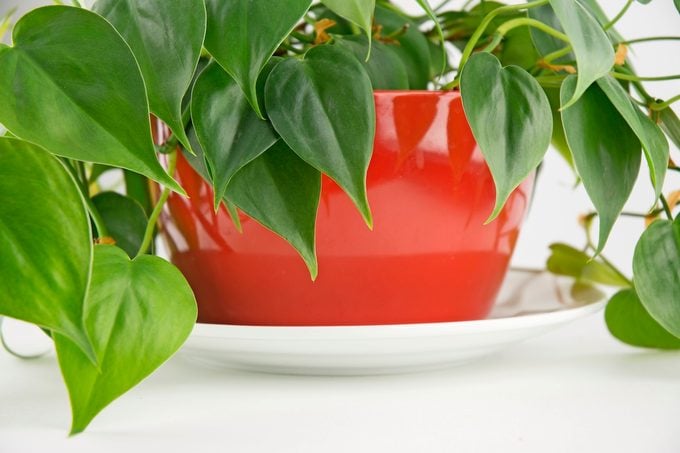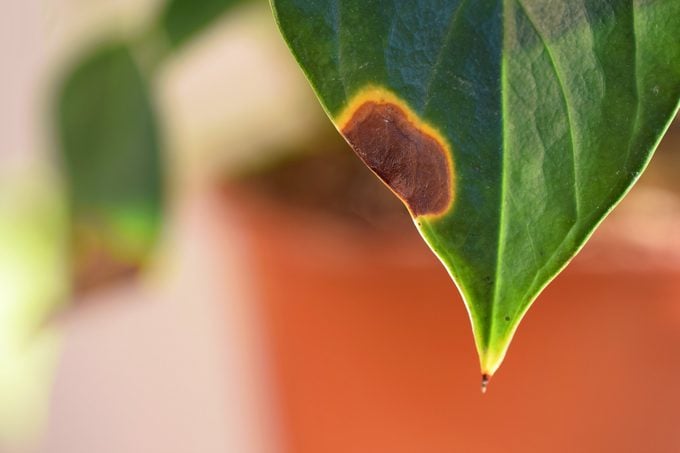Why Does My Plant Have Brown Tips on the Leaves?
Updated: Nov. 16, 2021
Noticing brown tips on leaves of your indoor plants? Solve the problem with proper watering and fertilizing tips from a gardening expert.

Lack of Water or Humidity
If your plant is sporting crispy, dark or brown tips on the leaves, it may mean you need to water more often. Check the soil moisture, and slowly reduce the number of days in between watering. Watch your plants for signs of improvement. Here’s 6 helpful tips for watering container gardens.
Lack of humidity could also be the cause. Tropical plants prefer higher humidity than we have in our homes. When we turn on the heat in winter, there’s even less moisture in the air. Group plants together so that as one loses moisture through its leaves, the neighbors benefit. Or place plants on saucers or trays filled with pebbles and water. Set a pot on the pebbles above the water. As water evaporates, it increases the humidity around the plant, where it is needed.
Check out the top 10 best houseplants for low light.
Brown Tips on Leaves: Signs of Nutrient Deficiency

A burned look on leaf tips, or dark green/reddish-purplish older leaves may indicate a phosphorus deficiency. With a potassium deficiency, you may see yellow or brown along older leaf tips and edges, yellowing between veins, curling leaves or spotting.
For potted plants, add a slow-release type of fertilizer to the soil mix before planting. Every time you water, a little fertilizer is released, providing a steady flow of nutrients. But depending on the growing conditions and number of plants in the container, a midseason boost may be needed. Stay on top of your fertilizer applications by making notes on a calendar.
Next, find out why your indoor plant has yellow leaves.




















